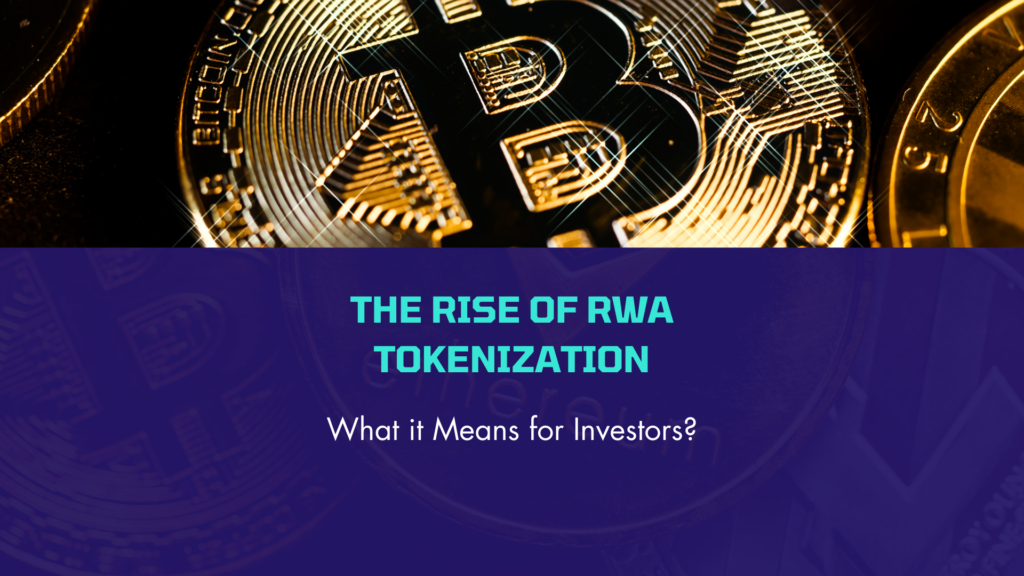The Rise of RWA Tokenization: What it Means for Investors?
In recent years, the tokenization of real-world assets (RWA) has emerged as one of the most transformative trends in the cryptocurrency industry. By converting tangible assets—such as real estate, commodities, and even art—into digital tokens on a blockchain, RWA tokenization is revolutionizing how investors access and trade traditional assets. This article explores what RWA tokenization is, its benefits and challenges, and what it ultimately means for investors looking to diversify their portfolios in the digital age.
What is RWA Tokenization?
RWA tokenization refers to the process of converting physical or traditional financial assets into digital tokens that are recorded on a blockchain. Each token represents a fraction of ownership in an asset, making it easier to trade, manage, and access previously illiquid investments. For instance, instead of purchasing an entire property, investors can buy tokens representing a share of that real estate. This innovative approach not only increases liquidity but also democratizes access to high-value assets.
Benefits for Investors
1. Increased Liquidity
Traditionally, assets like real estate or fine art are considered illiquid because selling them can be time-consuming and costly. RWA tokenization breaks these barriers by allowing assets to be divided into smaller, tradable units on digital exchanges. Investors can now buy or sell tokens representing fractions of these assets, thereby unlocking liquidity that was previously unavailable.
2. Lower Entry Barriers
The high cost of acquiring physical assets has always been a challenge for many investors. With tokenization, investors can start with a relatively small amount of capital. This fractional ownership model means that you don’t need to purchase an entire asset to benefit from its performance. It opens up alternative investments to a broader audience, including retail investors who were previously excluded from these markets.
3. Enhanced Transparency and Security
Blockchain technology provides a decentralized and immutable ledger, ensuring that all transactions are recorded transparently. This level of transparency helps reduce fraud and increases trust among investors. Moreover, tokenized assets can be audited in real time, providing investors with up-to-date information about asset ownership and performance.
4. Diversification Opportunities
RWA tokenization enables investors to diversify their portfolios beyond traditional cryptocurrencies. By including tokenized real estate, commodities, and other assets, investors can spread their risk across a wider range of investment vehicles. Diversification is key to mitigating risk, especially in volatile markets. This integration of digital and traditional assets offers a new pathway to hedge against market uncertainties.
Challenges of RWA Tokenization
1. Regulatory Uncertainty
One of the primary challenges facing RWA tokenization is the regulatory environment. Since tokenized assets often represent ownership in real-world assets, they can fall under complex regulatory frameworks that vary from country to country. Investors must stay informed about the legal implications of trading tokenized assets, as non-compliance could lead to legal and financial risks.
2. Valuation Difficulties
Accurately valuing tokenized assets can be challenging, especially when traditional appraisal methods may not directly apply in the digital world. Market participants must rely on a combination of traditional valuation techniques and new models designed for tokenized assets. This transition requires both investors and platforms to adapt to a hybrid valuation approach.
3. Technology and Security Risks
While blockchain offers robust security features, it is not entirely immune to technical glitches or cyber attacks. Investors should choose platforms with strong security protocols and conduct due diligence to ensure that their tokenized assets are well-protected. As with all crypto investments, risk management is crucial.
What Does RWA Tokenization Mean for Investors?
The rise of RWA tokenization signifies a major shift in the investment landscape. For investors, it means:
- Greater Accessibility: More investors can participate in markets that were once exclusive to high-net-worth individuals and institutions.
- Improved Efficiency: The ability to trade fractions of high-value assets can lead to faster, more efficient markets.
- Innovative Investment Strategies: With access to a wider array of assets, investors can create more diverse portfolios that balance risk and reward.
- Transparency and Trust: Blockchain’s immutable record helps build trust by ensuring that asset ownership is clear and verifiable.
By integrating traditional assets into the digital ecosystem, RWA tokenization is paving the way for a more inclusive and dynamic investment environment.
Final Thoughts
RWA tokenization is rapidly transforming the financial landscape by merging the traditional asset world with innovative blockchain technology. With increased liquidity, lower entry barriers, enhanced transparency, and significant diversification opportunities, tokenized assets offer a compelling proposition for modern investors.
However, as with any emerging technology, there are challenges to overcome—regulatory uncertainty, valuation complexities, and inherent technological risks. Investors must conduct thorough research and employ robust risk management strategies to harness the full potential of tokenized assets.
